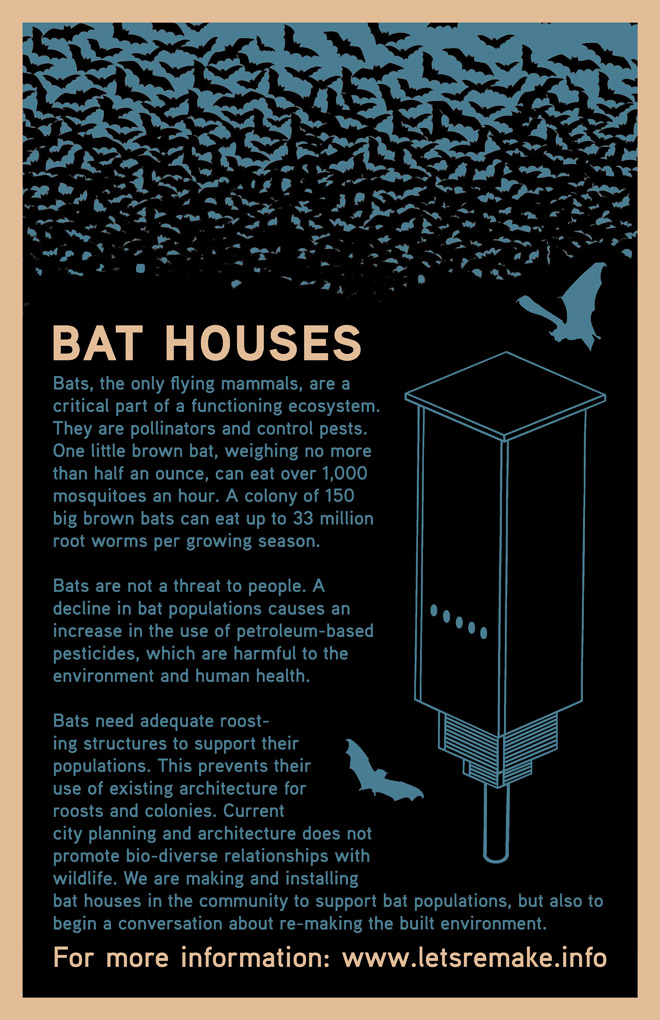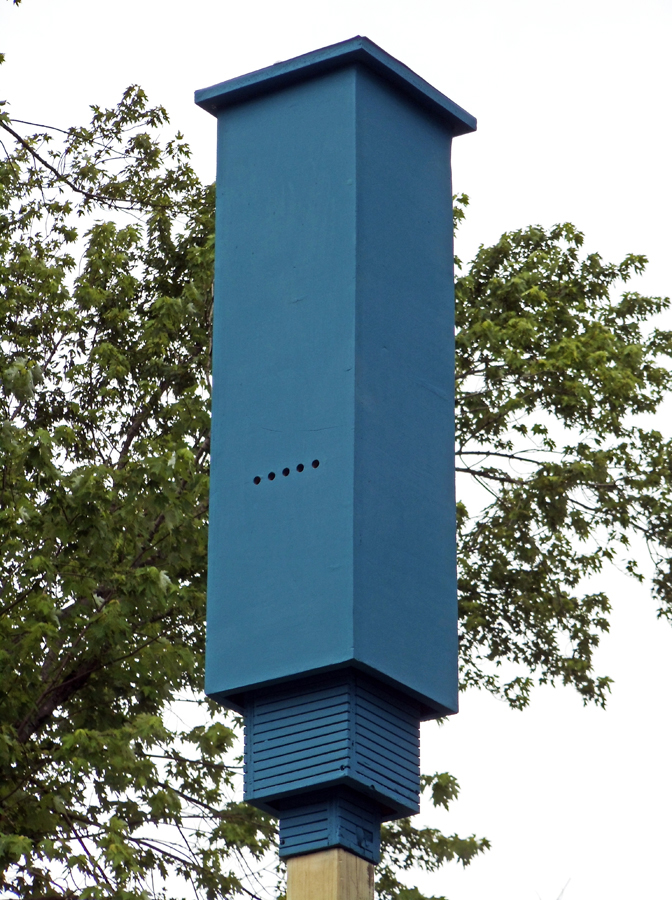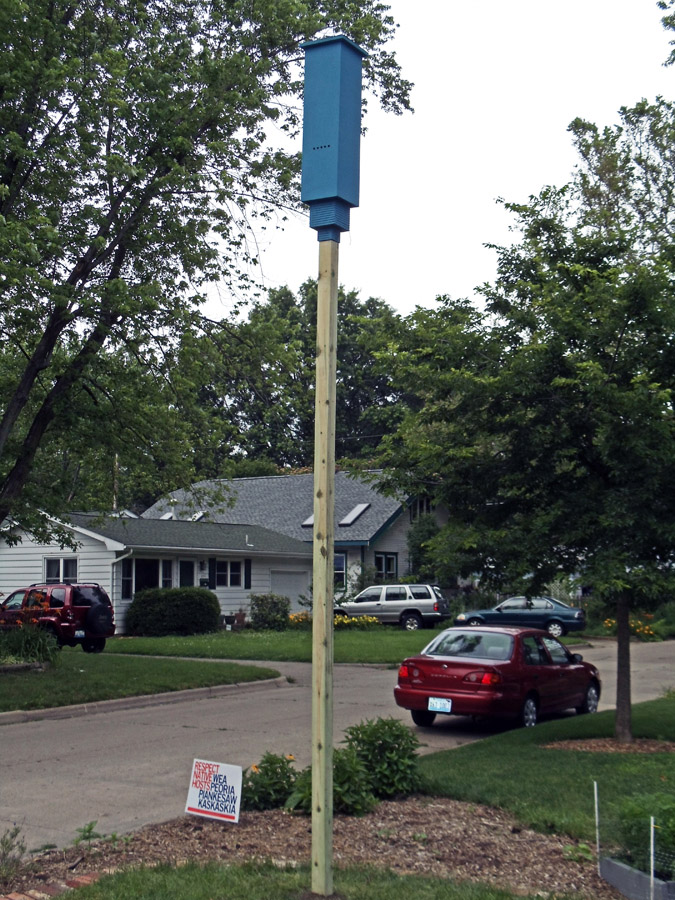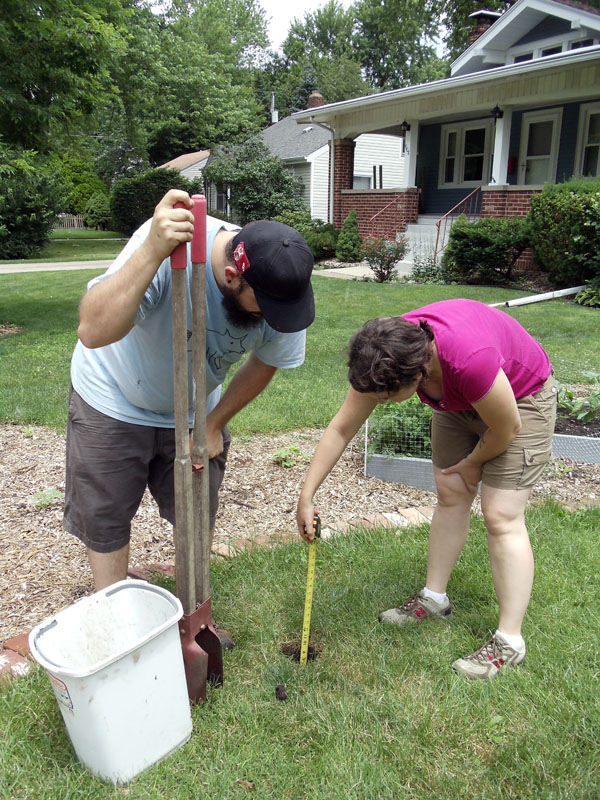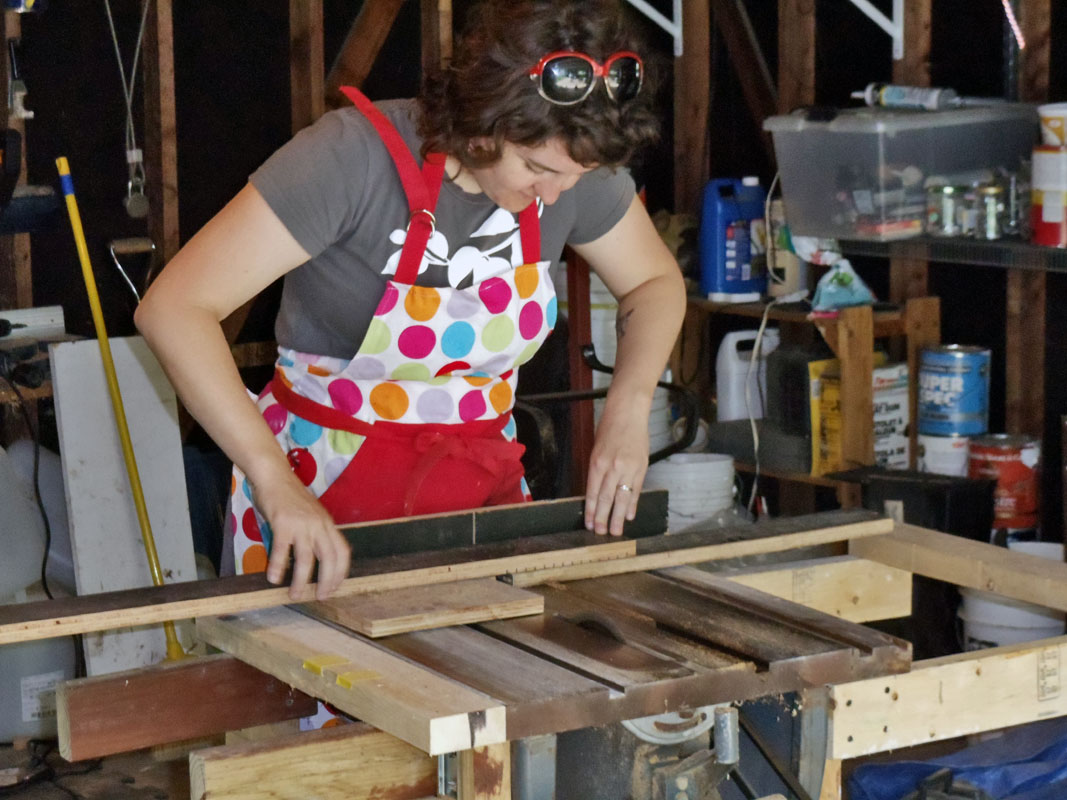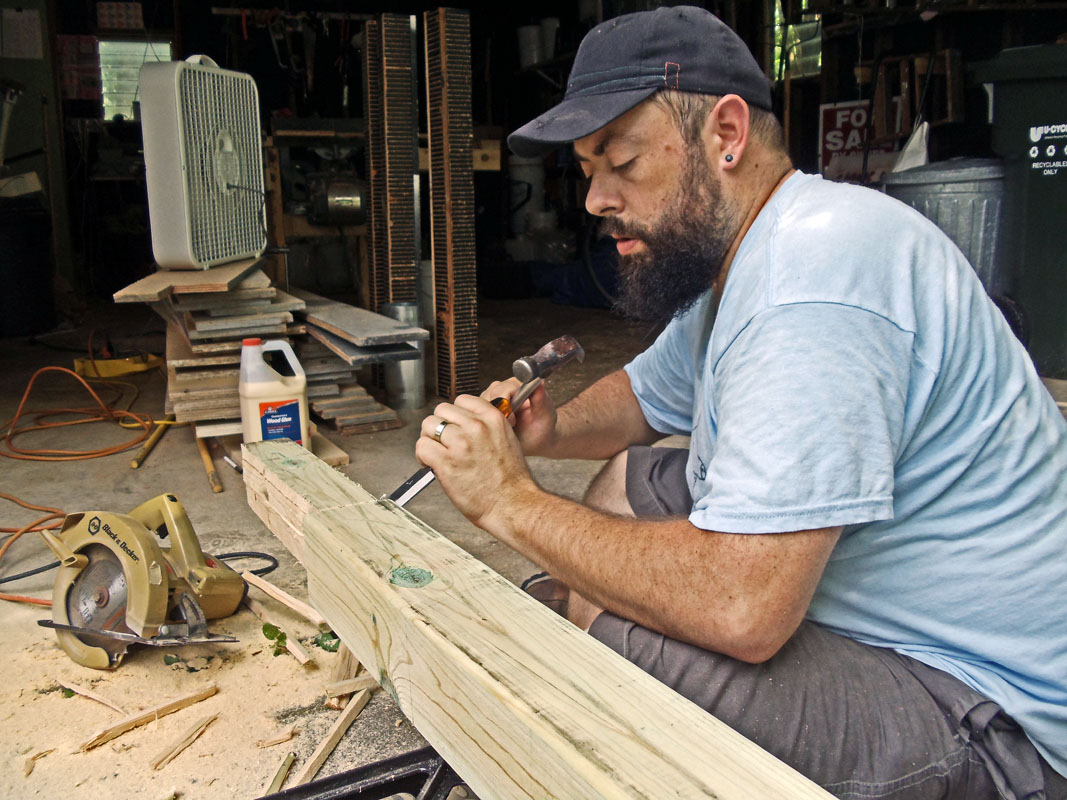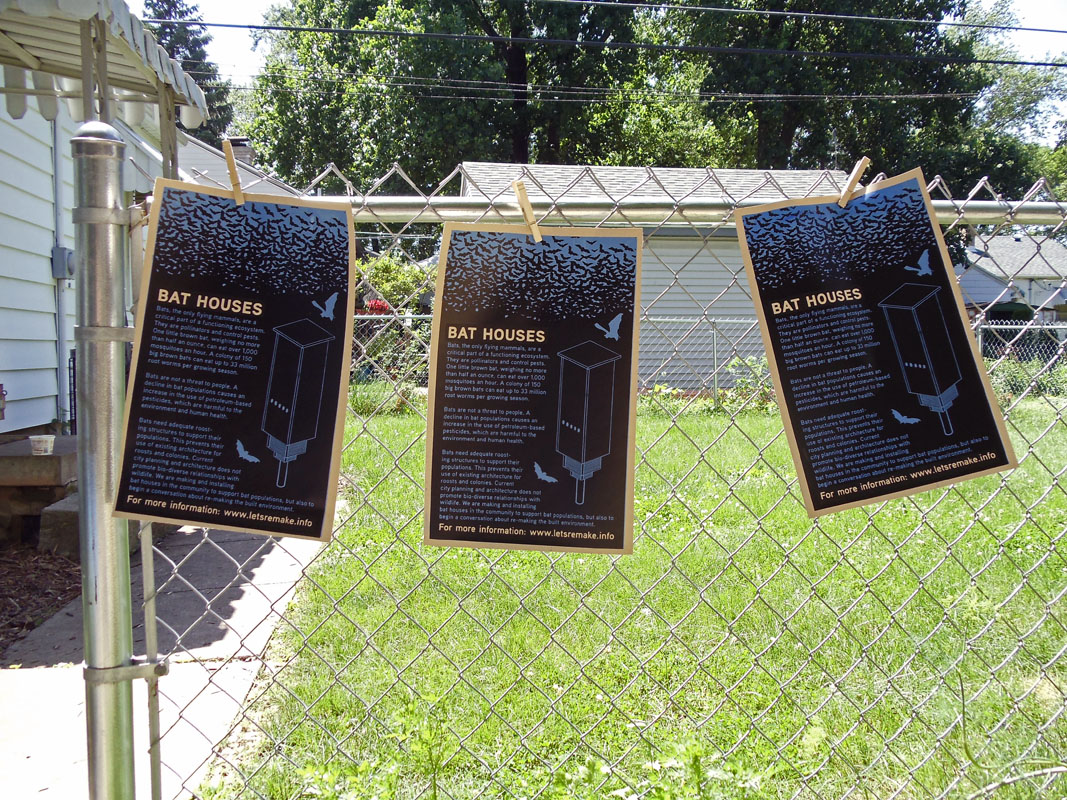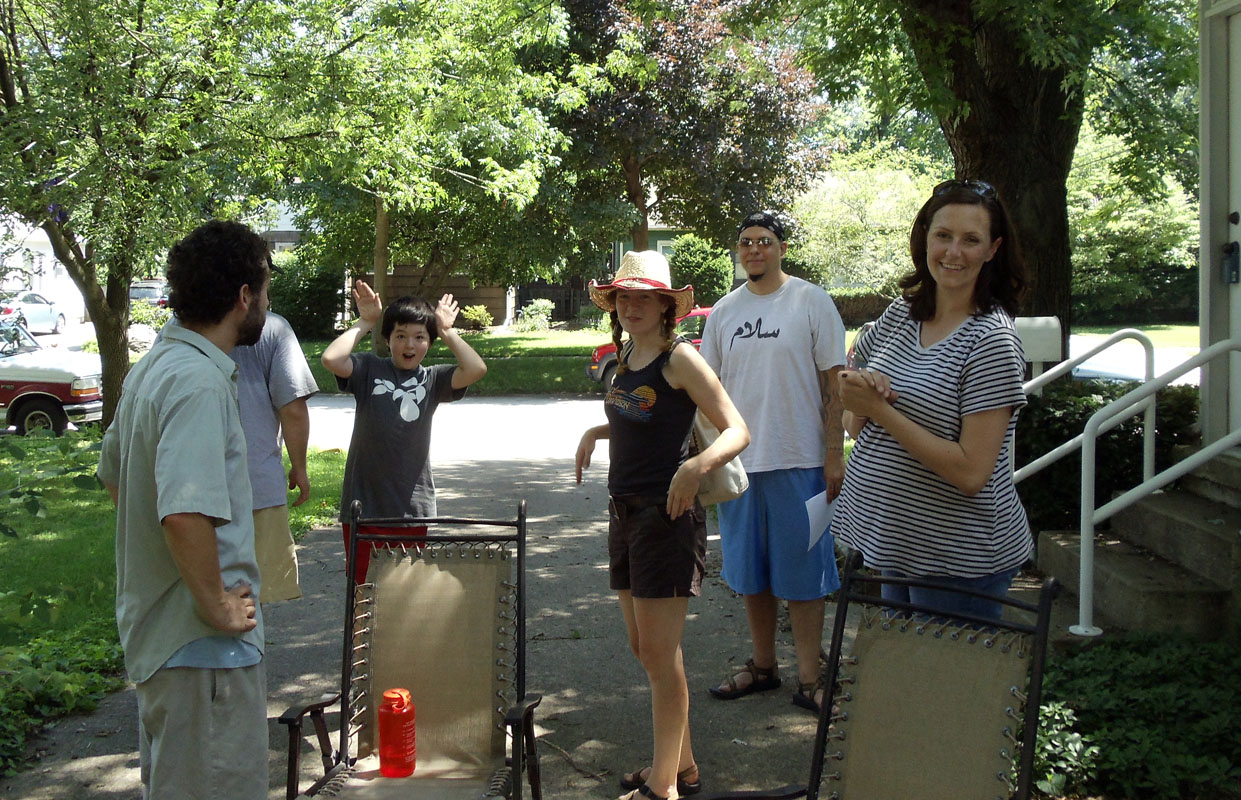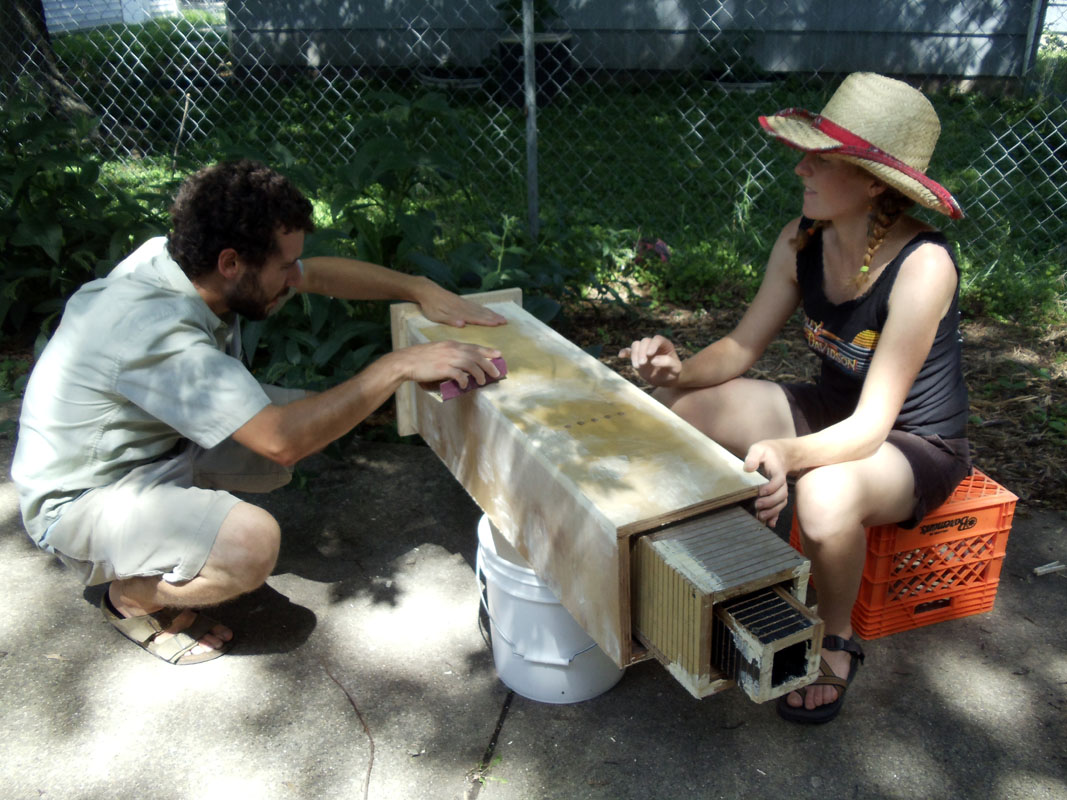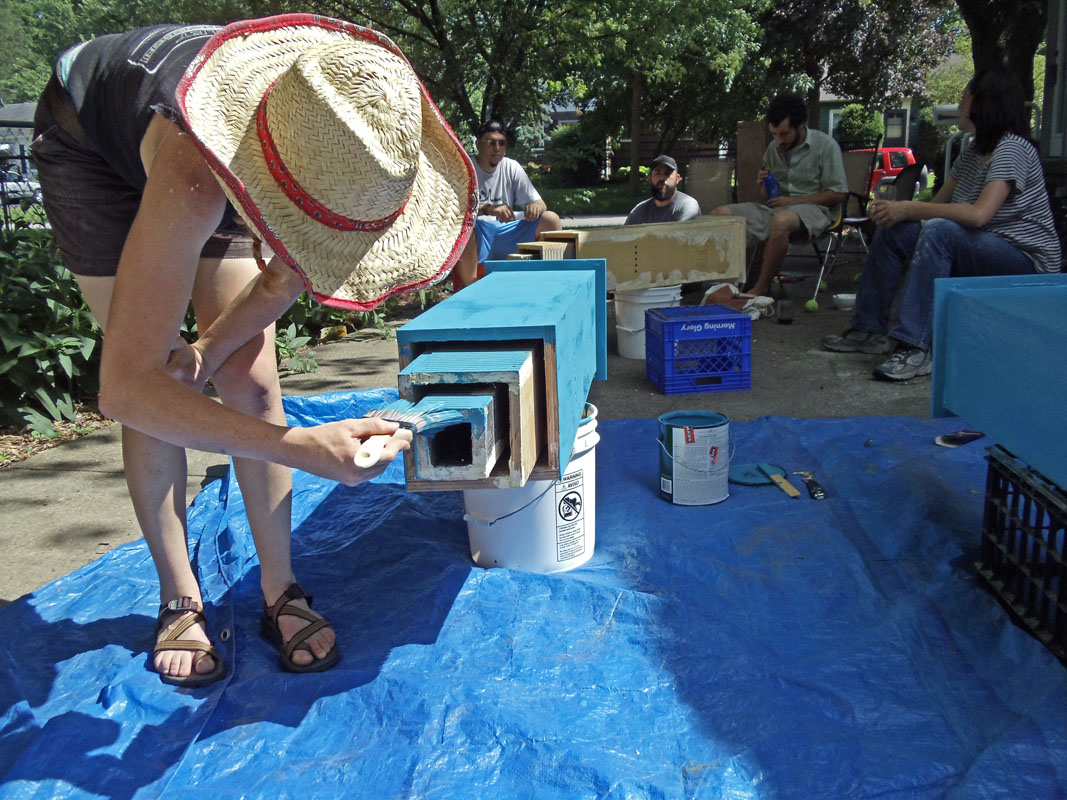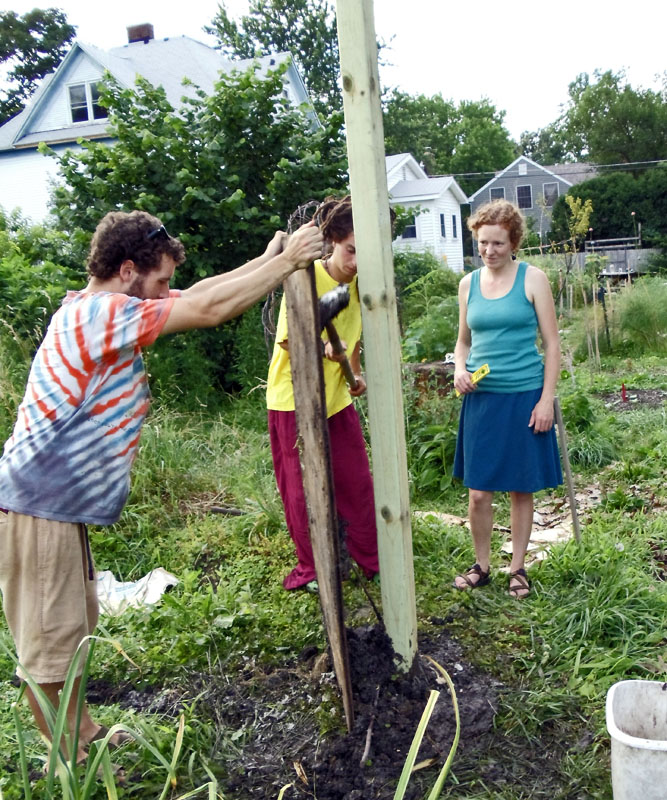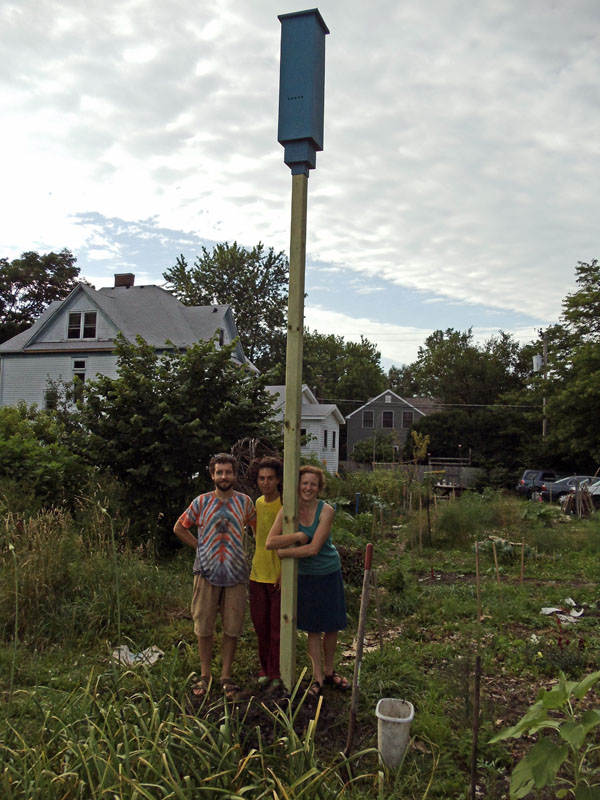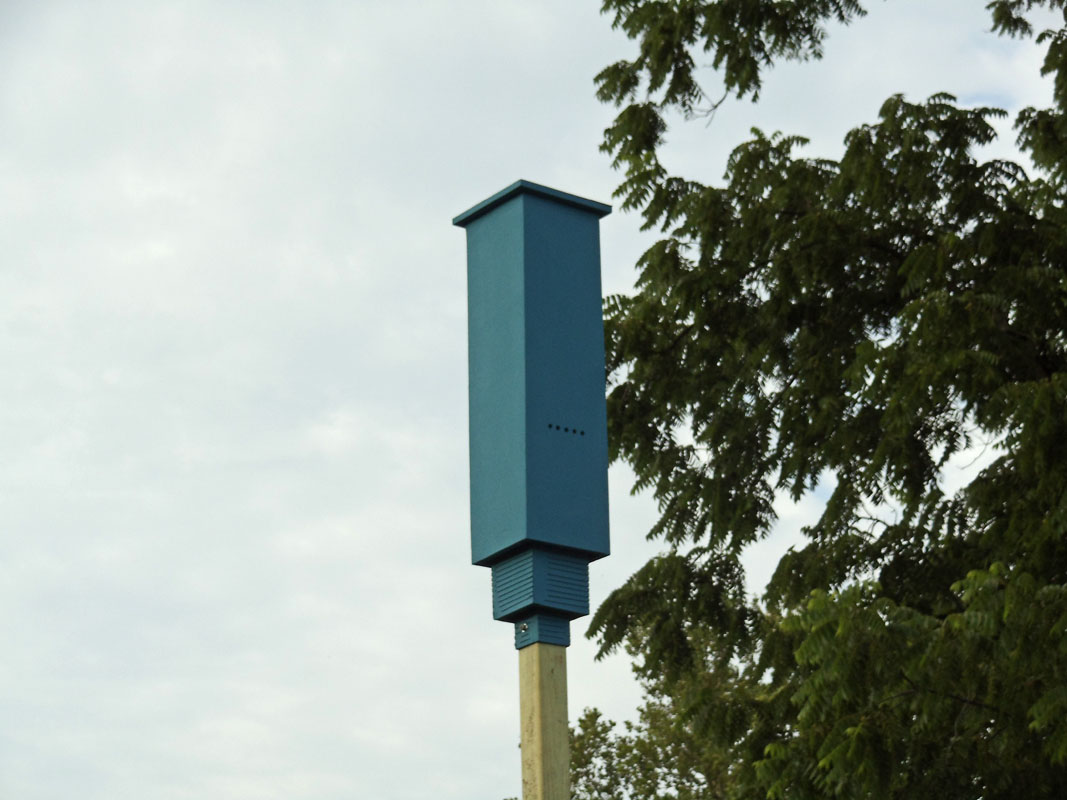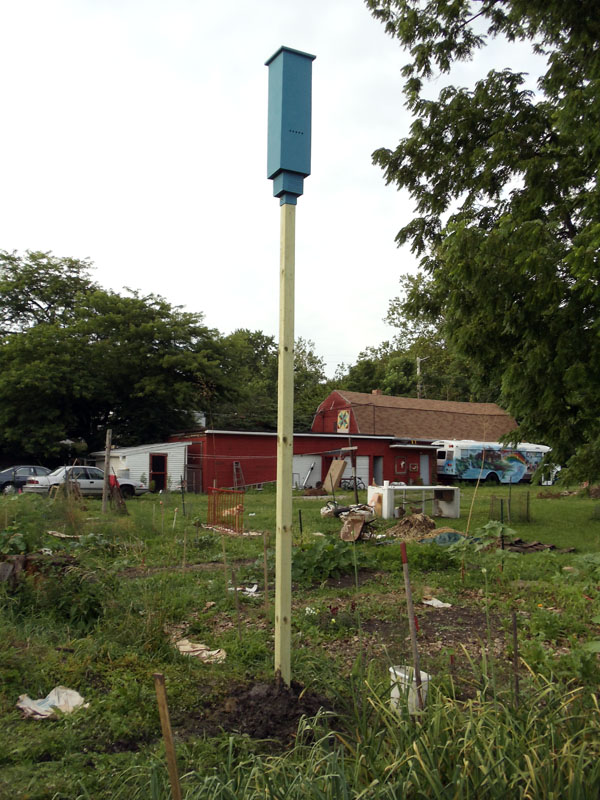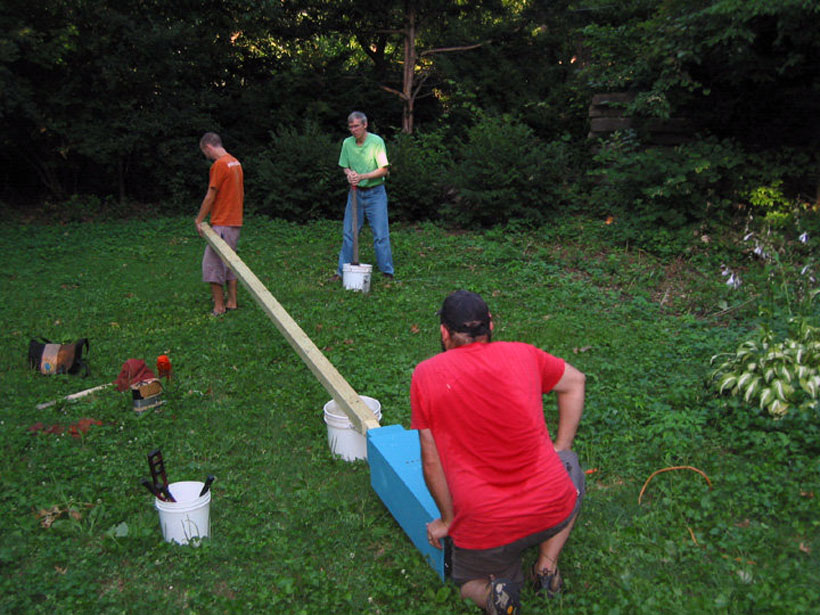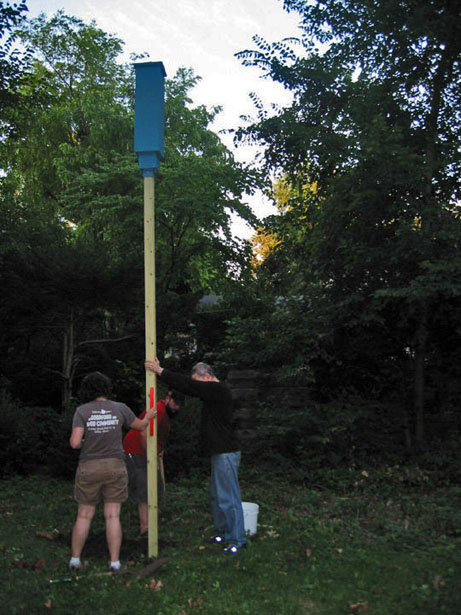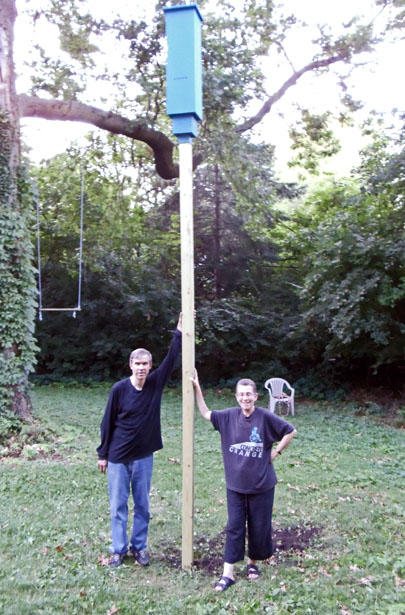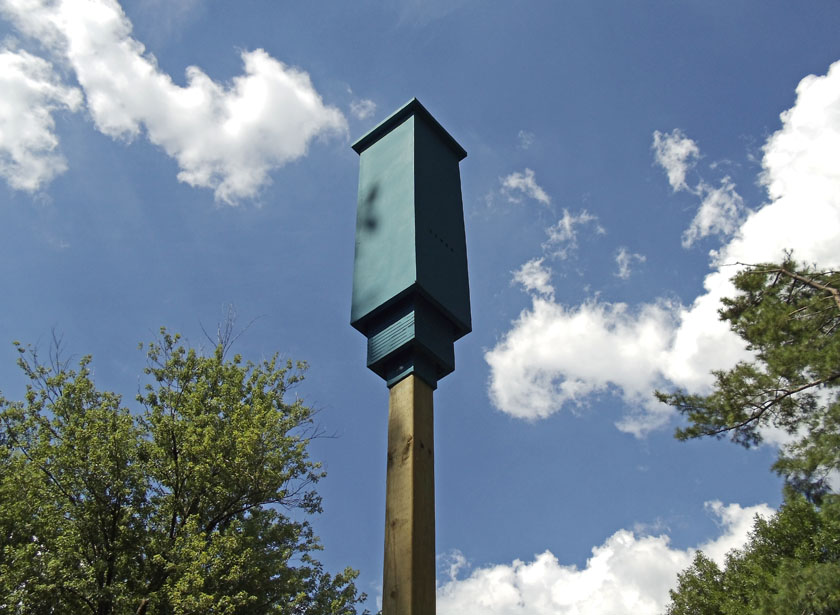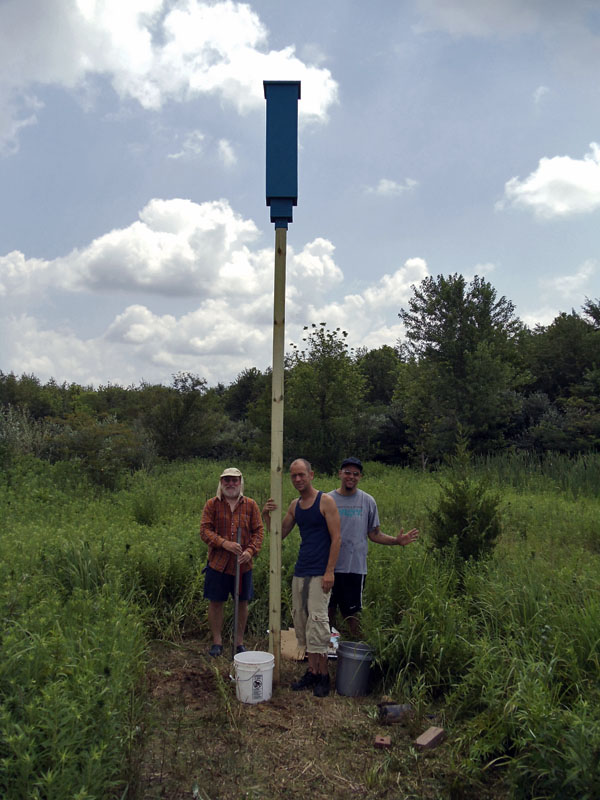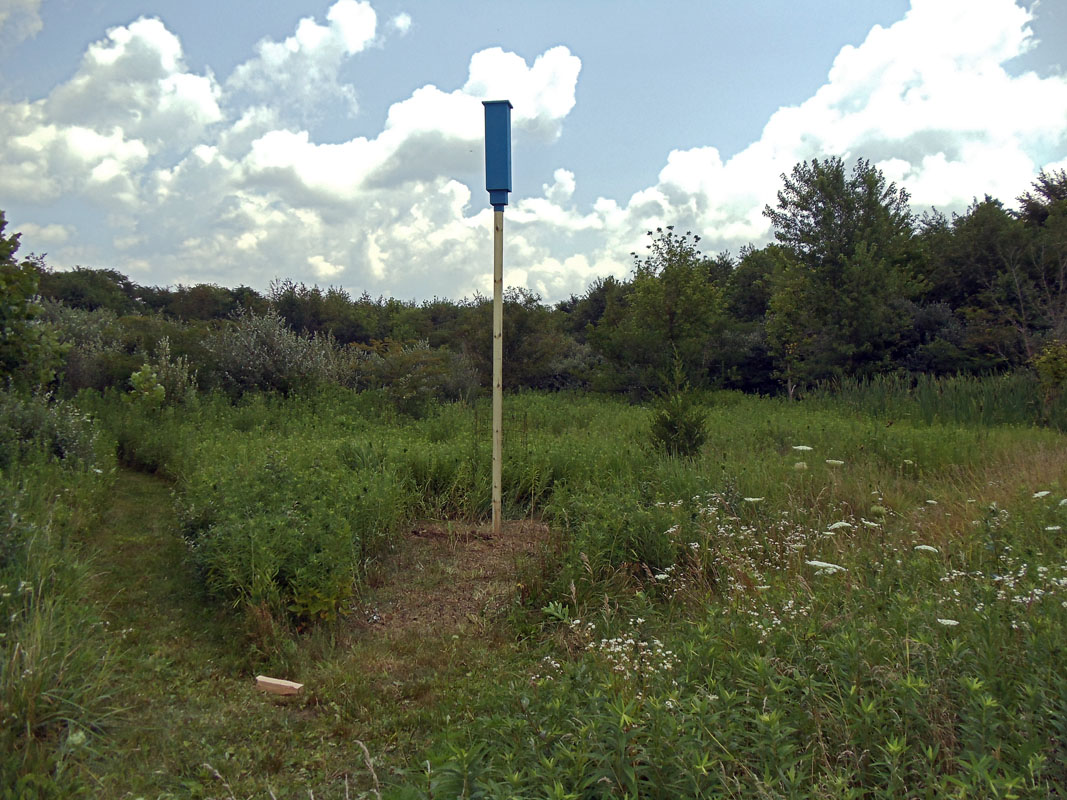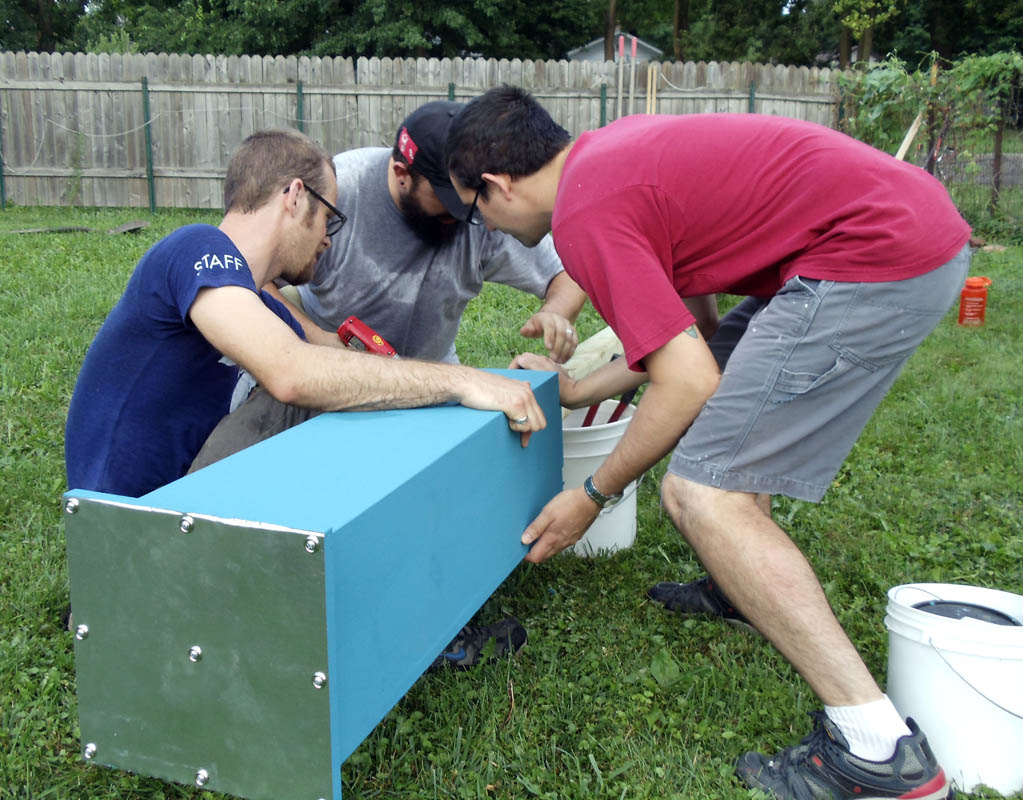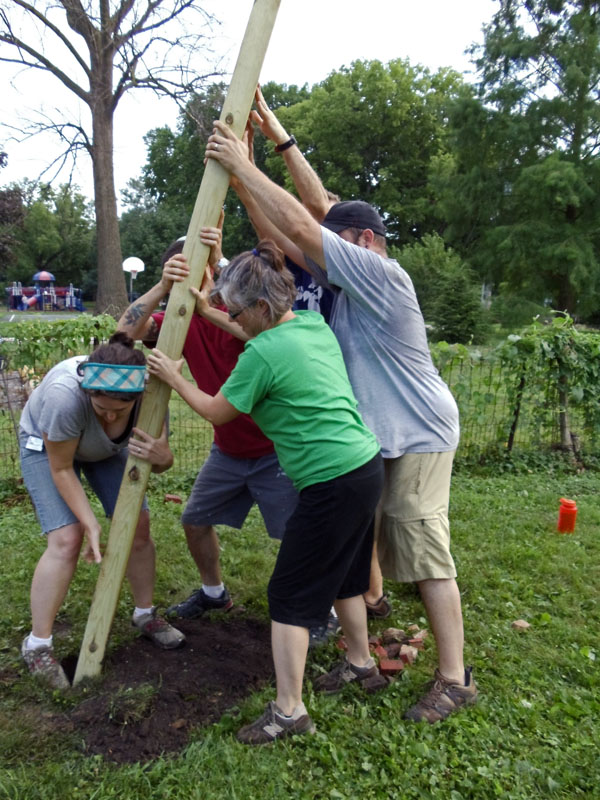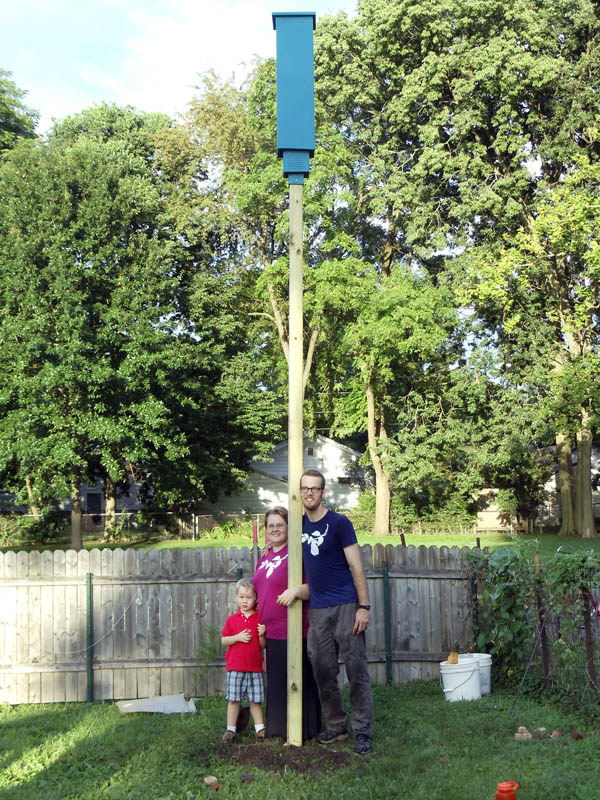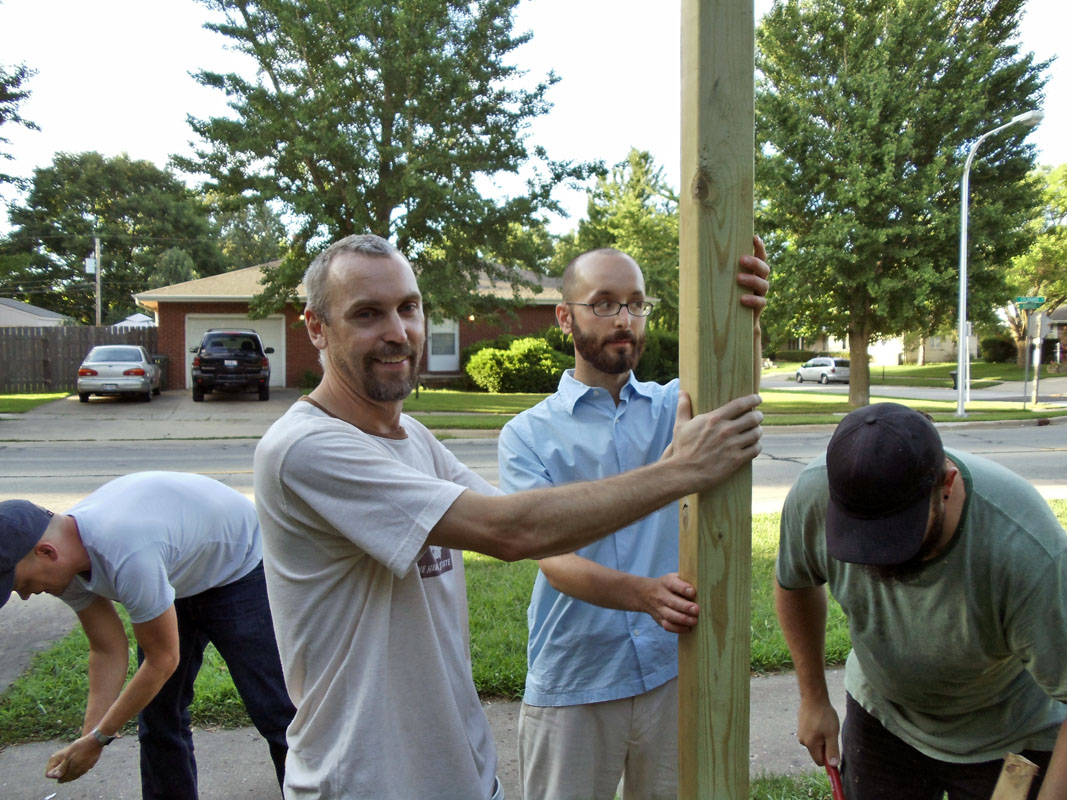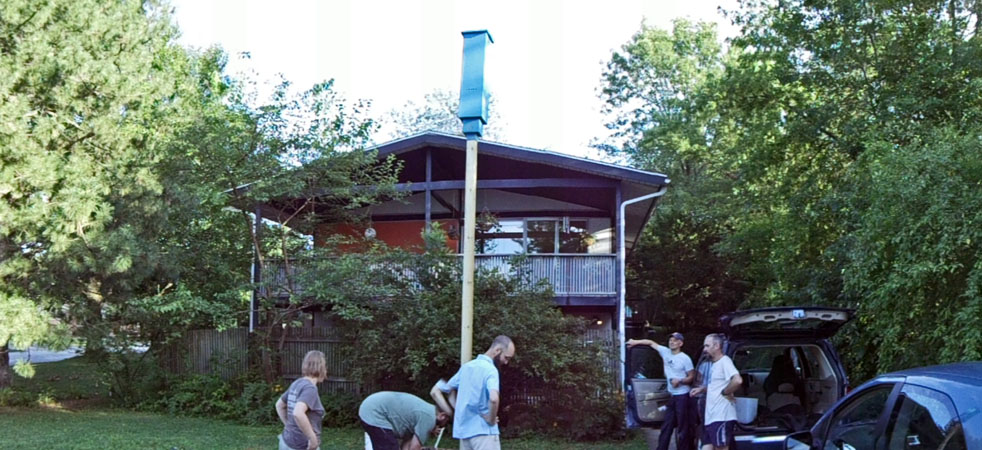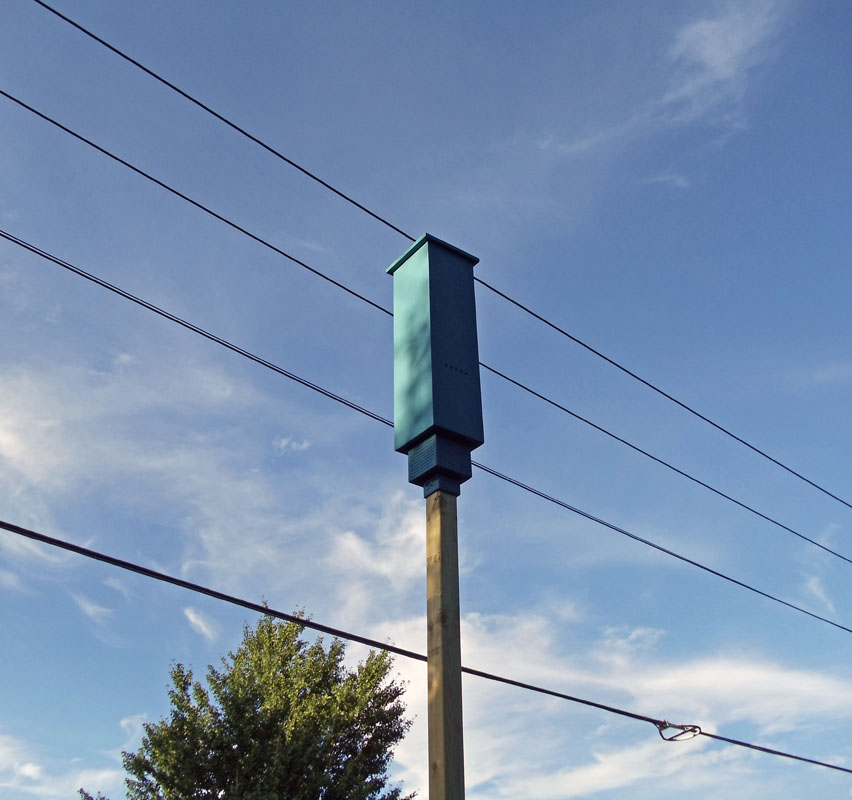We made and installed a network of bat houses in Urbana, Illinois, to support the local and regional bat population, but also to begin a conversation about re-making the built environment.
Our houses and cities are designed passively, ignorant of surrounding ecologies. Current city planning and architecture does not promote bio-diverse relationships with wildlife. Bats, among other wildlife, are confronted with habit encroachment and loss. Bats need adequate roosting structures to support their populations. Making structures for bats prevents their use of existing architecture for roosts and colonies.
Using plans from the international Bat Conservation International, we built the Two-chamber Rocket Box bat house. Recycled and reclaimed materials constitute the bat habitats. At 45" tall and weighing approximately fifty pounds, this elegant bat house sits on top of a sixteen foot wooden pole and can house hundreds of little brown bats.
We built seven of these houses and placed them around the city. We chose to make bat houses for several reasons. In researching local environmental issues, we found that bats are an essential part of a functioning ecosystem.
Bats are the only flying mammals. However, they are unique mammals and have their own special sub-category known as Chiroptera, or "hand wing." Bats are highly dexterous and social, like other mammals. As pollinators and pest control, they are a welcome addition to our landscape. One little brown bat, weighing no more than half an ounce, can eat over 1,000 mosquitoes an hour. A colony of 150 big brown bats can eat up to 33 million root worms – which threaten corn crops – per growing season.
Bats are not a threat to people. The most common fear is that bats transmit rabies. All mammals are suseptabile to this disease, but less than half of one percent contract rabies. If a bat has rabies, it will die quickly and unlike dogs or cats, will seldom become aggressive. Remember any bat that can be caught is most likely ill and should not be handled.
Another misconception about bats presumes that they are blind. In fact they can see everything but color as they fly at night, even down to a strand of hair. They use a system called echolocation to navigate in total darkness. High-frequency pitches bounce off objects to give bats a sense of their surroundings through sound.
A decline in bat populations causes an increase in the use of petroleum-based pesticides, which are harmful to the environment and human health. Bat populations serve as a marker of how free a given area is of pesticides and chemical pollution.
Bats are an exciting and overlooked part of a biodiverse ecosystem. As we think more about a sustainable environment in policy making as well as popular culture, it is beneficial to consider and learn from bats.
Bat Houses can be found at the following coordinates:
No. 1: 40°06'17.23" N 88°11'52.07" WNo. 2: 40°06'17.77" N 88°12'06.87" W
No. 3: 40°06'17.93" N 88°12'54.58" W
No. 4: 40°06'26.23" N 88°11'55.68" W
No. 5: 40°08'20.20" N 88°09'30.64" W
No. 6: 40°06'43.45" N 88°11'48.82" W
No. 7: 40°05'40.55" N 88°11'56.31" W
We would like to thank the Urbana Art Council for a grant supporting this project. We would also like to thank Baker's Bikes and Parasol Records for providing a major amount of reclaimed plywood for the houses, and Common Ground Food Co-op for hosting a bat house building workshop. Many thank yous go to the hosts of the bat houses: Sarah Ross & Ryan Griffis, Maggie Taylor and J.P. Goguen from La Casa Collectiva, Reed Larson and Sharon Irish, Andy and Jody Miller, Ron Marusarz, Gabe, and Kali Wolf at Green Island, Mike and Jacqueline Hannah, and Conrad Bakker and Ashlee McLaughlin.

